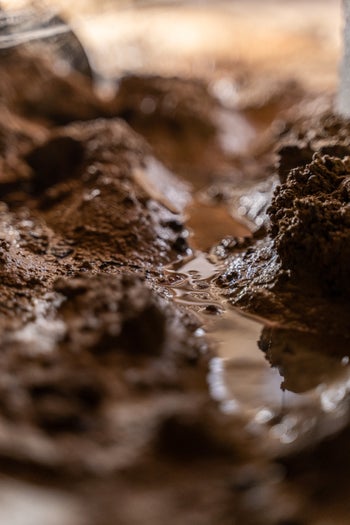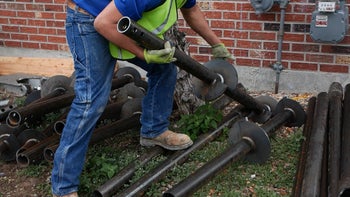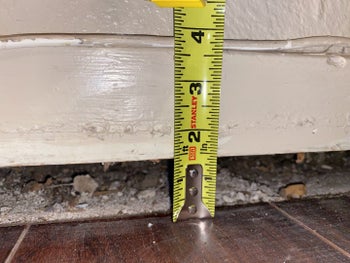Does Your Home Need Foundation Lifting?
Table of Contents
1. What Is Foundation Lifting?
2. Why Your Home Might Need Foundation Lifting – What Is Differential Foundation Settlement?
3. Common Signs Of Differential Settlement
4. What Causes Differential Settlement?
5. How Foundation Lifting Via Underpinning Works
6. Signs Your Home Might Need Foundation Lifting
7. Is There A Difference Between Foundation Lifting And Foundation Repair?
8. Cost Of Lifting A Foundation
9. How To Help Prevent Foundation Problems
Searching for information about foundation stabilization? If so, you’ve landed on the right page because that’s what we’re going to discuss in this article. We’re going to cover what foundation stabilization is, why it might be necessary, how foundation stabilization works, signs your home’s foundation might need to be lifted, and more. So, if you’re concerned about your home’s foundation and structural integrity, read on to learn more about foundation stabilization.
What Is Foundation Lifting?
Foundation lifting refers to the process of raising foundations experiencing something called differential settlement. Differential settlement can occur due to various factors, including problematic soils, poor construction techniques, and even natural phenomena like earthquakes. We’ll talk more about differential settlement in the next section.
In a nutshell, foundation stabilization involves stabilizing the foundation and lifting it to “maximum practical level,” an industry term that means we’ll raise the foundation as much as possible without causing damage. When it’s necessary, the importance of foundation stabilization cannot be overstated, as it ensures your home’s structural integrity.

Why Your Home Might Need Foundation Lifting – What Is Differential Foundation Settlement?
Simply put, differential settlement is when part of a foundation sinks or settles into the ground while other parts remain at their original elevation or are not as severe in settlement.
Differential settlement creates an uneven load-bearing situation that can lead to significant structural damage if it isn’t corrected via foundation stabilization. Therefore, as soon as differential settlement is noticed, it needs to be addressed promptly.
Common Signs Of Differential Settlement
If you notice any of the following signs of differential settlement (or anything else that seems suspicious), contact an experienced foundation repair contractor right away for an inspection. They will determine the best course of action to ensure your home remains structurally sound:
- Doors and windows that no longer open and close properly
- Uneven floors
- Wall, ceiling, or floor cracks
- Stair step cracks in brick or masonry
- Torn or wrinkled wallpaper (The wall behind the wallpaper might be cracked.)
- Diagonal cracks from the corners of windows and doors
- Moldings that are separating from the ceiling or wall
- Chimneys or porches that are leaning away from the house
- Ceilings and floors that are separating from the wall
For more information, see Foundation Settlement.
What Causes Differential Settlement?
Differential settlement can be caused by various things, including the following:
- Poor construction practices – Soil must be adequately tamped down before construction starts. If this isn’t done correctly, the foundation will settle unevenly into the ground after it’s built.
- Expansive soil – Expansive soil is clay-rich and because of this it swells as it soaks up moisture and shrinks as it dries out. This creates ground movement under the foundation and can, over time, cause differential settlement.
- Soil that’s prone to erosion – Erosion-prone soil can lead to the formation of voids under a home. If the foundation settles into the voids, it will cause differential settlement.
- Seismic events – We probably don’t need to explain this one.
- Excavation next to the foundation – If your neighbor digs a big hole too close to your home, it could destabilize the foundation and lead to differential settlement.
- Improper Drainage – The lack of proper drainage installed (Downspouts or French Drain) around your home’s foundation can lead to possible settlement issues.
How Foundation Lifting Via Underpinning Works
Foundation lifting via underpinning is a well-established method of stabilizing foundations experiencing differential settlement. The process involves the excavation of soil beneath the foundation and the placement of piers (push pier, helical pier, drilled concrete pier, or slab pier) to stabilize the structure. For more information, see What Is Foundation Underpinning?
Underpinning is most definitely not a DIY project. It’s an intricate process that requires professional expertise and specialized equipment, but the payoff is substantial. Foundation lifting not only restores a building’s structural integrity but can also add value to the property.
So, if you notice signs of foundation settling, such as cracks in walls or uneven floors, you must contact an experienced, licensed foundation repair contractor for a thorough inspection and repair plan. You’ll rest easy knowing your home is safe and secure on a strong foundation.

Signs Your Home Might Need Foundation Lifting
If you see any signs of differential settlement, your home might need foundation stabilization. If you notice signs of differential settlement, you must call a professional foundation repair contractor immediately and ask for a foundation inspection. They can assess the problem and determine if foundation stabilization is necessary. Whatever you do, don’t delay. Foundation problems worsen over time, and you’ll pay more for the repair if you wait.
Is There A Difference Between Foundation Lifting And Foundation Repair?
Foundation lifting is a type of foundation repair. The term “foundation stabilization” refers to a foundation repair that involves raising a section of your foundation that has settled. Other types of foundation repair include fixing wall cracks using carbon fiber strips or installing screw jacks in a crawl space.
Cost Of Lifting A Foundation
The cost of foundation stabilization can vary depending on factors such as the size of the home, the severity of the differential settlement, and your geographical location. Only a professional foundation repair contractor can assess the situation and provide an accurate repair estimate.
Keep in mind that while the cost of foundation stabilization may seem steep, it’s necessary to protect your home’s structural integrity and property value.
How To Help Prevent Foundation Problems
Believe it or not, most foundation problems are caused by excess moisture in the soil around a foundation. Therefore, you can go a long way toward preventing trouble by simply getting groundwater under control. Here are some ways to do this:
- Clean your gutters regularly so they aren’t full of debris. Clogged gutters can cause runoff to spill over the side of the house and soak into the ground around the foundation.
- Use downspout extensions to carry runoff away from the foundation before being released.
- Regrade your yard, if necessary, so it slopes away from the foundation. This prevents groundwater from draining toward and soaking the ground around the foundation.
- Consider relocating any water-hungry vegetation planted next to your home.
- Install a drain tile system. There is no better foundation waterproofing system.
If you think your home might need foundation stabilization, contact Bay Area Underpinning today to schedule a FREE foundation evaluation (Does not apply for real estate transactions.) We serve the Bay Area and Northern California for both residential and commercial foundation repair projects.
More Resources
Publish Date:
Last Modified Date:

Our Locations
2333 Courage Dr. Suite C
Fairfield, CA 94533
1161 N Fair Oaks Ave
Sunnyvale, CA 94089



